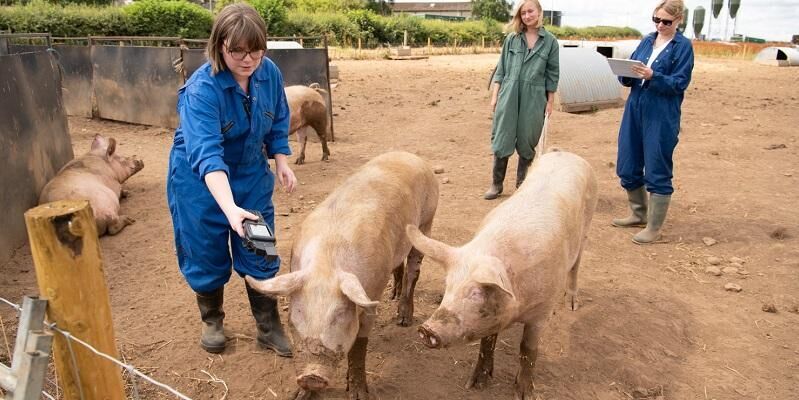Big data and decision making

Farmers and the wider food industry already gather large amounts of data about their operations, while regulatory bodies such as the Food Standards Agency, the Environment Agency and other government departments also hold large national level databases.
We are working on ways to capture this existing data from multiple sources – from large official data sets, economic data and retailer figures about consumer choices across the whole of the UK to individual records held by farmers about their infrastructure and animals – and combining it so that it can be analysed.
In collaboration with colleagues at the Leeds Institute for Data Analytics, our researchers have been developing systems that use artificial intelligence to look for patterns in this data and make predictions about the future.
This can range from identifying changes in consumer behaviour to understanding trends such as health problems in the national livestock herds that might create shocks to the system.
Being able to better predict these problems could help farmers and the wider food industry prepare strategies to deal with them more effectively.
Much of this work, led by Professor Lisa Collins, has focused on the pig industry as part of the £2.1m PigSustain project, but is now being applied to other areas of UK agriculture, from chickens to cereal crops.
On the farm
Technology is also opening up new ways to observe and monitor the farming process. From keeping an eye on the health of crops and soils to watching the behaviour of individual animals in a herd, the volume of information that farmers will have at their fingertips is likely to grow exponentially in the coming years.
New computer systems will be needed to make sense of the vast amounts of information that will be generated by the in-field sensors, robotic crawlers, drones and other monitoring systems we are working on, enabling farmers to make informed, sensible decisions.
Our researchers are developing algorithms that can be easily used at a farm level via a desktop computer or smartphone app. Images from hyperspectral cameras, for example, can provide information about the levels of photosynthesis and water loss of individual plants. This can then be used to inform precisely where fertiliser and irrigation is needed as conditions change.
These algorithms could also help to automate many of these processes, helping to reduce the day-to-day care for crops that farmers face as they continue to optimise the productivity and sustainability of their fields through precision agriculture.
Beyond the farm
Our Smart Agri-Systems work at the University of Leeds aims to use a whole-system analysis approach to forecast the impact of large-scale changes on the food industry. This includes looking at how climate change or disease may alter supply chains and consumer behaviour, how political and legal changes might impact trade and productivity.
We have also been working with companies to help them develop decision making tools that allow them to visualise the workings of their business on a data dashboard. It can help them track hundreds of thousands of animals moving through their business every week, tracking how fast they are growing and where they are being sent.
The system can help them predict when animals will be ready to be sent for slaughter, helping them give more accurate indications of stock to retailers and identify any potential bottlenecks.
Beyond the food industry, data from distributed sensors in fields can also be used to help make better decisions about flood protection. By helping to identify when soil porosity changes in different locations in a catchment, it can provide information about how much water it can store.
Professor Steven Banwart and his colleagues at the Yorkshire Integrated Catchment Solutions Programme (iCASP) are attempting to use the data produced by in-situ sensors to understand how soil structure changes in different conditions so that these predictions can become more accurate.
Our other research areas